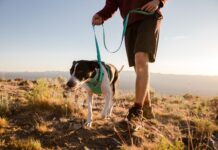
Best tips and tricks for puppy training
It’s not easy learning how to train a puppy, but crate training is an excellent way to help them settle into your home and get them on a schedule. Once your puppy adjusts to its new schedule he will learn to anticipate bathroom breaks and bedtime, making your life a lot easier. Once you bring your new dog home, it’s smart to begin training immediately. But where should you start? What’s the best way to train a puppy? And how to train your new puppy. So here we discuss tips and tricks about to train a new puppy
Give a name to your puppy
This is most important for Puppy training should begin the day they arrive in your new home. Start by helping them to get to know their name. Use it every time you play with them, feed them, or cuddle them and they’ll soon recognize it and respond when called. Once they know their name, you can use it to communicate with them and start training your puppy.
Puppy Potty training
it’s an exciting time when you bring your new puppy home, but a new pet also comes with challenges. One of the first and biggest challenges that you may face is that of potty training. Some puppies will learn this quickly, while others will struggle with it for a while. During this training period, always remember to be patient, remain calm, and be consistent. If you stay positive and follow these guidelines, potty training can be a simple process.
Celebrate and reward when your puppy potties in the correct location.
If your pup goes in the wrong location and you SEE it happen, calmly interrupt them and immediately bring them to the correct location. If you do not see your pup have an accident, clean it up, and hope to catch the next one. No amount of scolding will communicate what you did not like about their choice of the toilet.
Supervise, supervise, supervise! The more accidents your pup has that you don’t see happen, the more they learn that sometimes it’s okay to go into the house.
Train your puppy: how to walk on a leash
Many people think that dogs just innately know how to walk politely on a leash, but this skill is something that needs to be trained. It’s an important skill to teach, and one you’ll value every time you take your puppy out for a walk but new playful puppies don’t always walk easily on a leash. Practice makes perfect in this case. Training a puppy to walk calmly and respectfully on a leash will help you when you socialize them and housebreak them. “If you can’t control your dog on a leash, so have to give dog training to your dog then you’re not going to go very far,” says Theresa Viesto, a Labrador retriever breeder and handle. These are the things you do that your dog actually hates.
Train your puppy: How to socialize
Daily Walks Are Key. Just taking your puppy out to a public place and walking around will help him grow more comfortable with the world and the people around him. Visto recommends socializing your puppy as soon as they’re old enough. “Drag them around to pet stores, parks, anywhere puppy is allowed,” she told us. Socializing your puppy when he is young will build his confidence, make him friendlier toward strangers and other puppies, and help him learn to remain calm and respectful outside of your house
Train your puppy: How to sit
Stand in front of your puppy holding some of his dog food or treats. Wait for him to sit – say “yes” and give him a treat. Then step backward or sideways to encourage him to stand and wait for him to sit. Give another treat as soon as they sit
Teaching a puppy to sit or lay down may look like a fun trick, but it is actually a very valuable skill. Use the command “sit” to prevent your puppy from jumping on visitors, be respectful during meal times, and as a gateway to teach other useful skills such as “stay” and “come.” Once your adorable puppy grows into a 90-pound dog, you’ll be glad you have this command down. These are the secrets dog trainers won’t tell you for free.
Train your puppy: To not chew the furniture
If you catch your dog chewing on something they shouldn’t, interrupt the behavior with a loud noise. Offer them an acceptable chew toy instead, and praise them lavishly when they take the toy in their mouth.





